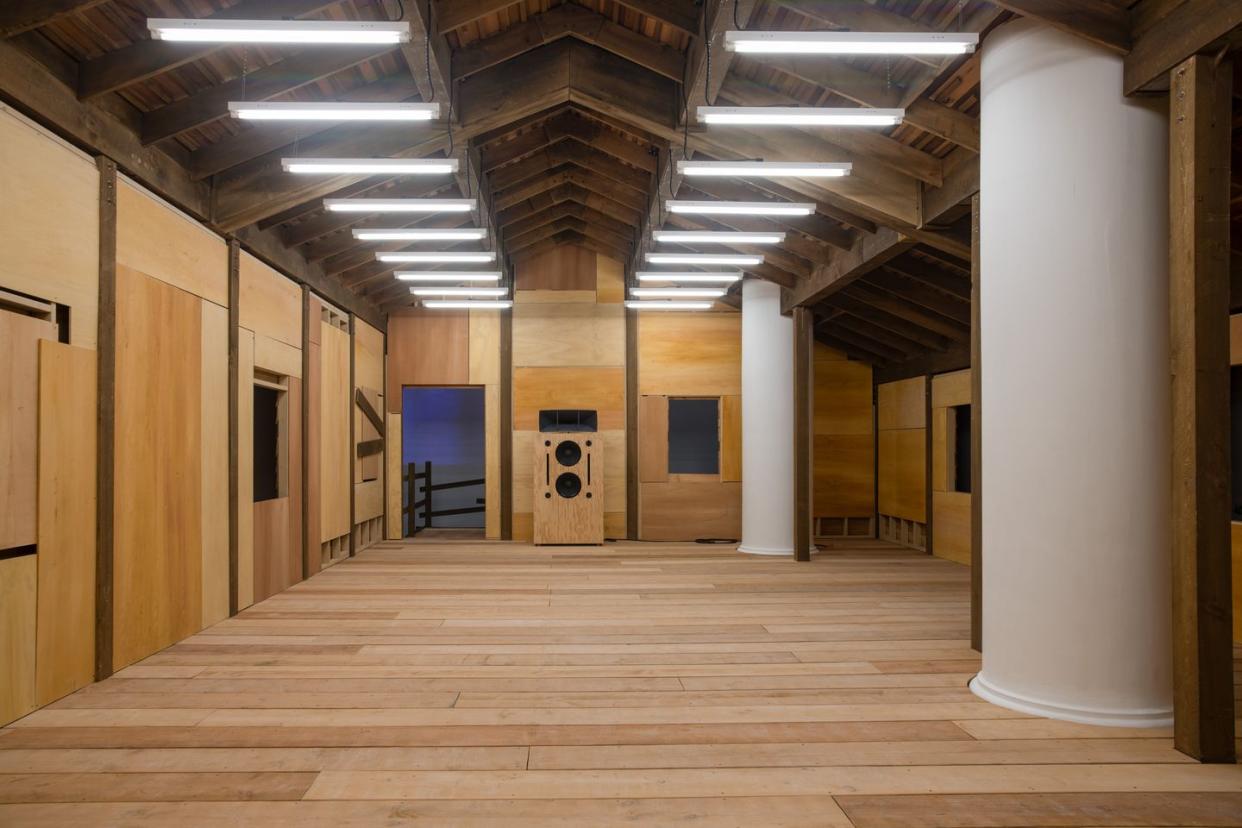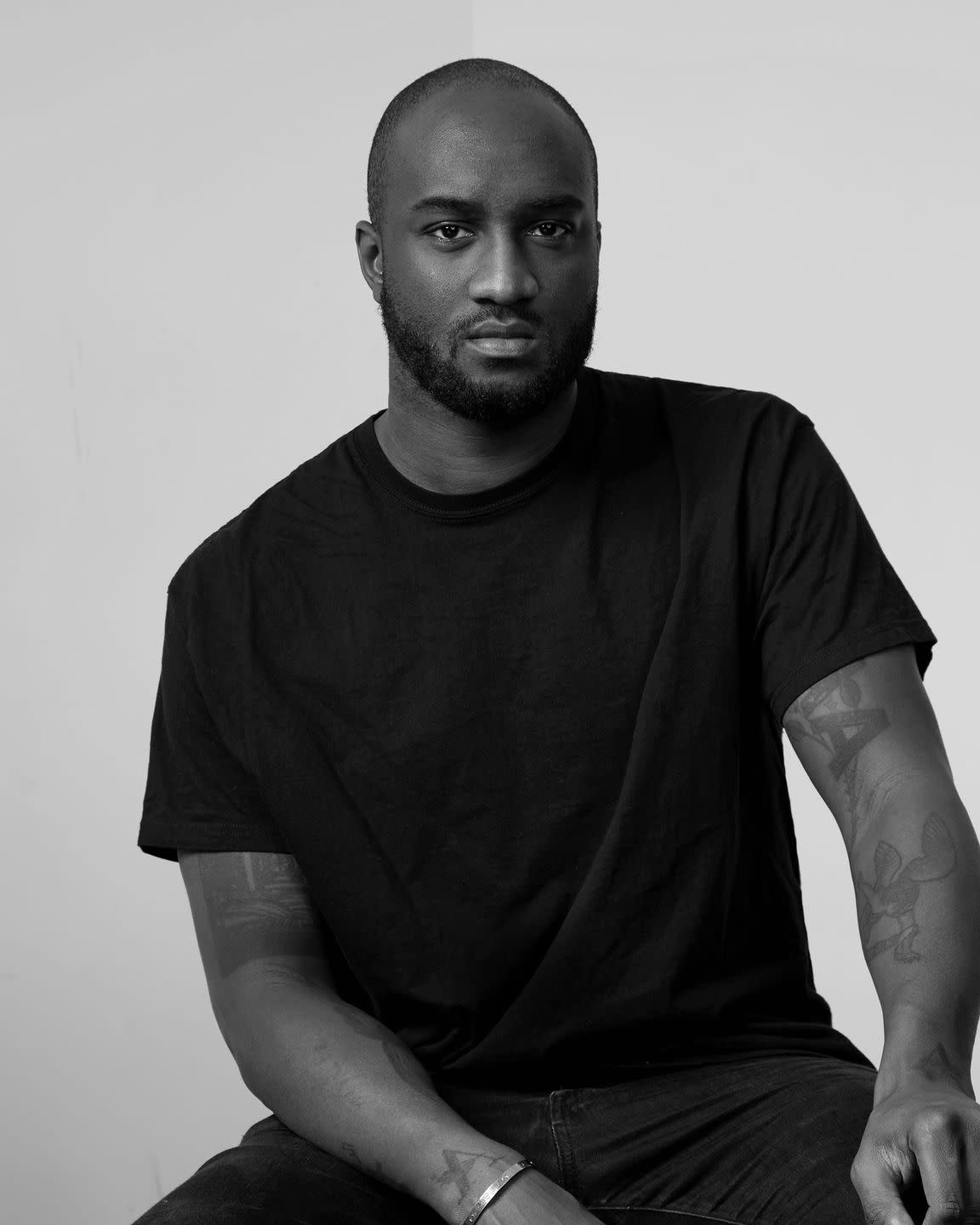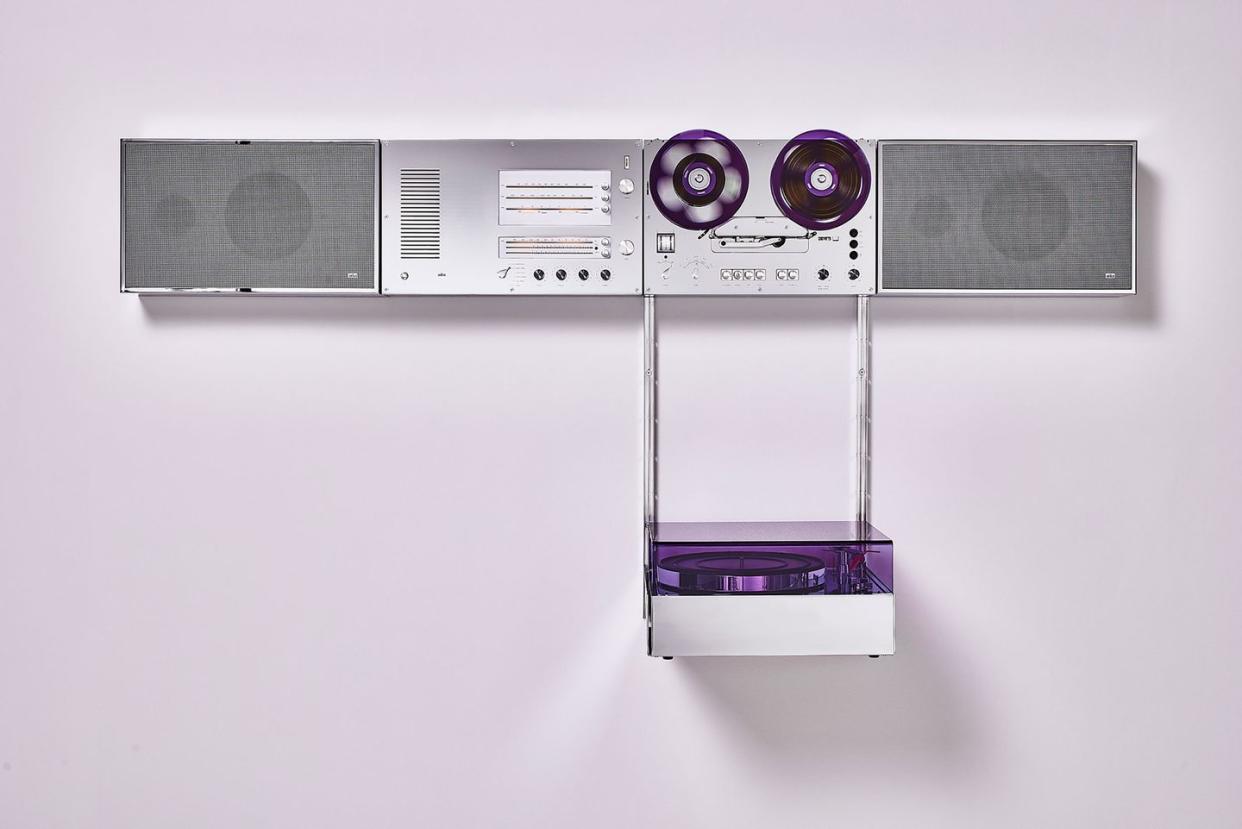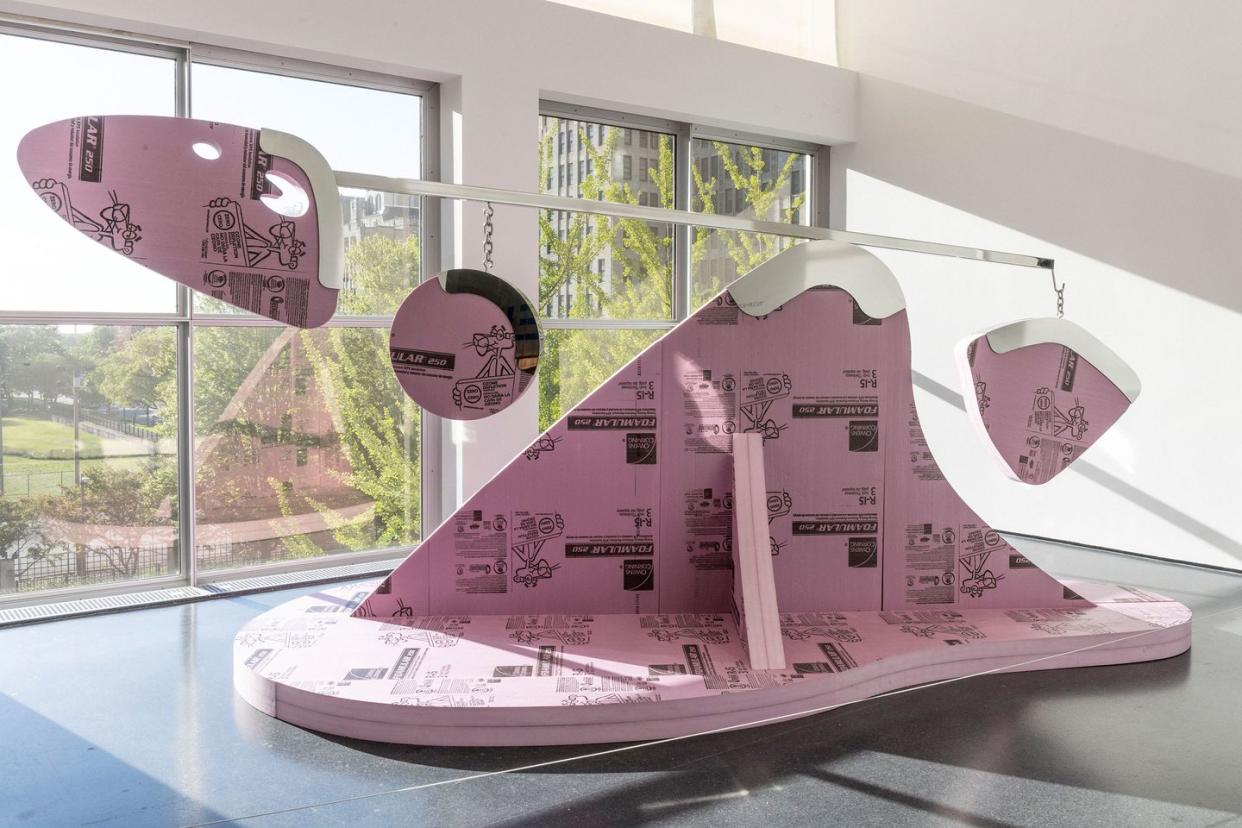This New Virgil Abloh Exhibition Breaks Barriers, Just Like the Designer Himself

Left: Takashi Murakami and Virgil Abloh, Times: Flames, 2018. Acrylic on canvas mounted on board. Courtesy of Takashi Murakami and Gagosian. © Virgil Abloh Securities/Shannon Abloh and © Takashi Murakami. Right: Virgil Abloh, 2020 Is an Architectural Problem Too, 2020–21. Screenprint on T-shirt. Courtesy of Gymnastics Art Institute & Virgil Abloh Securities.
The centerpiece of “Virgil Abloh: Figures of Speech,” a traveling survey of the late designer’s work that has just arrived at the Brooklyn Museum in New York City, is Social Sculpture, a seemingly simple wooden house built around the museum’s existing columns. But a closer look reveals rough, misaligned edges, boarded-over windows, and a jumbled patchwork of wood tones; indeed, this work traces its origins to a quote by the artist David Hammons about “negritude architecture”—that is to say, “the way Black people make things.”
“Nothing fits, but everything works,” Hammons once said. “But it doesn’t have that neatness about it, the way white people put things together; everything is 1/32nd of an inch off.”

Nearly three years ago—well before Abloh, the prolific fashion and industrial designer known for breaking barriers as the first Black artistic director at LVMH, passed away unexpectedly last year at the age of 41—he dropped that quote into a WhatsApp conversation with exhibition curator Antwaun Sargent; it was soon to be followed by a set of construction plans. What Abloh envisioned was “a museum within the museum, where young creatives show up and exchange ideas,” Sargent recalls.
Now, for the duration of the exhibition, which is on view through January 29, Social Sculpture provides a space for multidisciplinary programming all led by Black creatives—workshops on photography and sneaker design for children and teenagers; DJ sets and listening hours; and much more. In its very unconventionality as well as its focus on today’s youth, Social Sculpture is a living testament to the late multivalent talent.

Professionally trained in architecture, Abloh was also known for his receptiveness, both to creative dialogue from every member of his team and to the young people who would reach out to him on social media seeking words of encouragement. “He used to always say, ‘I’m designing for my 17-year-old self,’ ” Sargent remembers. “I think he meant that spaces are not designed thinking about Black kids. He decided that he was going to alter these spaces just enough so that everyone is allowed in.”
Abloh’s career was defined by his small alterations to the existing world, often laden with irony—see his Ikea rug stamped with the words WET GRASS—and with references to Black culture. A collaboration with Braun hanging near the entrance of the show, for instance, reimagines a 1965 wall-mounted hi-fi audio unit in chrome as an homage to “slab car” culture.

Abloh’s trademark 3 percent rule—that a new design could be created by changing an original by just 3 percent—was often polarizing; his fashion brand Pyrex was skewered for printing its logo on mass-produced rugby flannels, and a fashion critic’s scathing analysis is now immortalized onto a black woven rug on the floor of the exhibition itself.
“That part of the process was underappreciated, or misunderstood as copying,” Sargent says; from a conceptual standpoint, making alterations in a world largely designed by and for white people was Abloh’s way of claiming authority over an object’s value.

Undergirding all of this was Abloh’s love of architecture: His master’s thesis project from the architecture program at the Illinois Institute of Technology—a Chicago skyscraper “bent” at the waist so that its residents could have unobstructed views of Lake Michigan—appears in the show alongside fashion campaigns shot at Le Corbusier’s Villa Savoye, and transparent sound equipment designed to reference modernist glass houses.

And the accompanying wall text describes the architectural methods of everything he did, “the relentless process of making, testing, remaking, and retesting,” Sargent says, recalling the notes Abloh would scribble onto documents. “Not every idea worked, but for him, it wasn’t about whether it worked or didn’t work. It was about having an idea that he needed to get out into the world.”
You Might Also Like
